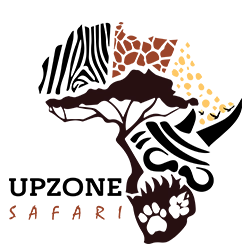FAQ
Mount Kilimanjaro Trekking
1. How difficult is it to climb Mount Kilimanjaro?
Climbing Kilimanjaro is considered a challenging trek due to high altitude and varying weather conditions. However, no technical climbing skills are required, making it accessible to physically fit individuals.
2. What are the best routes to climb Kilimanjaro?
The most popular routes include Marangu, Machame, Lemosho, Rongai, and Northern Circuit. Machame and Lemosho offer scenic views, while Marangu is the only route with hut accommodations.
3. What is the best time to climb Kilimanjaro?
The best months for trekking are December -March and June-October. These periods offer dry weather and better visibility.
4. How long does the trek take?
Depending on the route, the trek typically takes between 5 to 9 days. Longer routes improve acclimatization and increase the chances of reaching the summit.
5. Do I need a permit to climb Kilimanjaro?
Yes, all climbers must have a permit, which is included in the trekking package when booking with a licensed tour operator.
6. What equipment do I need?
Essential gear includes trekking boots, warm clothing, a sleeping bag, trekking poles, and a backpack. Tour operators provide detailed packing lists.
7. Is altitude sickness a concern?
Yes, altitude sickness can affect climbers due to rapid ascent. Proper acclimatization, hydration, and a slow trekking pace help mitigate risks.
8. What are the accommodation options on the mountain?
Accommodation varies by route. Marangu has hut accommodations, while other routes offer tented camps set up by tour operators.
9. Is travel insurance required?
Yes, travel insurance covering high-altitude trekking and emergency evacuation is strongly recommended.
10. Are porters and guides required?
Yes, all climbers must be accompanied by licensed guides and porters, who assist with logistics and carrying gear.
Safari Adventures
11. What are the best national parks for a safari?
Top destinations include Serengeti National Park, Ngorongoro Crater, Tarangire National Park, and Lake Manyara National Park.
12. What is the best time for a safari?
June-October is the best time for game viewing, while the Great Migration in Serengeti occurs from June to July and January to February.
13. What types of safaris are available?
Options include game drives, walking safaris, cultural safaris, and balloon safaris.
14. What wildlife can I see on a safari?
Expect to see the Big Five (lion, leopard, elephant, rhino, buffalo), as well as giraffes, zebras, wildebeests, and various bird species.
15. What should I pack for a safari?
Lightweight clothing in neutral colors, a hat, sunglasses, sunscreen, binoculars, and a camera are recommended.
16. Are safaris safe?
Yes, safaris are conducted by professional guides in secure vehicles, following strict safety protocols.
17. What types of accommodations are available on safari?
Options range from budget lodges and tented camps to luxury lodges and private reserves.
18. Do I need vaccinations for a safari?
Yellow fever vaccination may be required, and malaria prophylaxis is recommended. Consult your doctor before traveling.
19. How are safaris booked?
Safaris can be booked through licensed tour operators who handle permits, accommodations, and guided excursions.
20. Can I combine Kilimanjaro trekking with a safari?
Yes, many tour operators offer combined packages for trekking Kilimanjaro followed by a safari experience.
